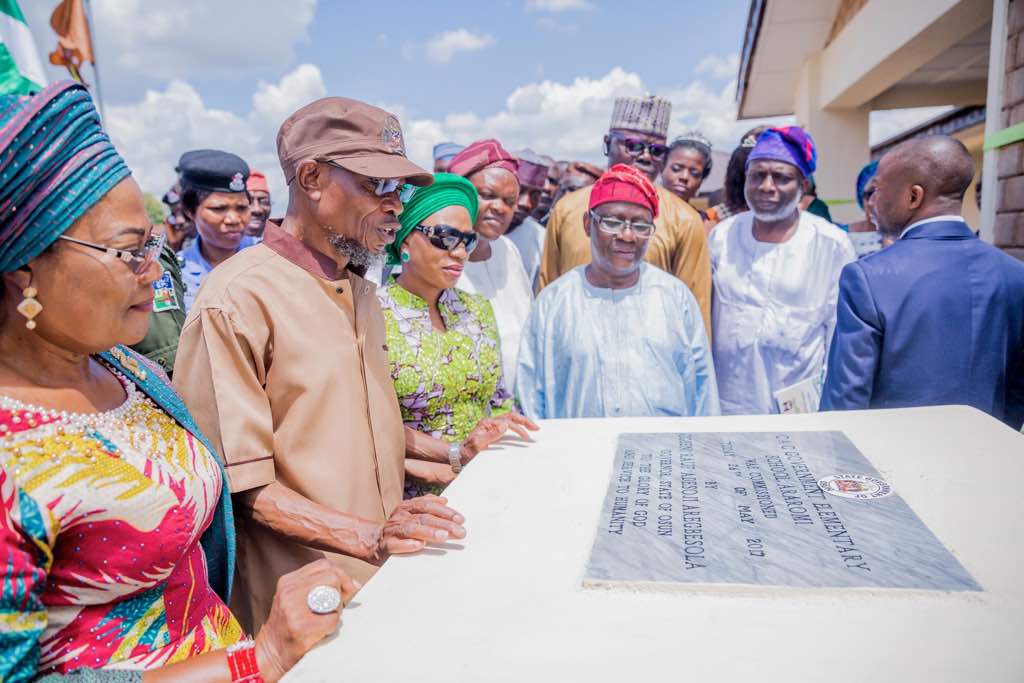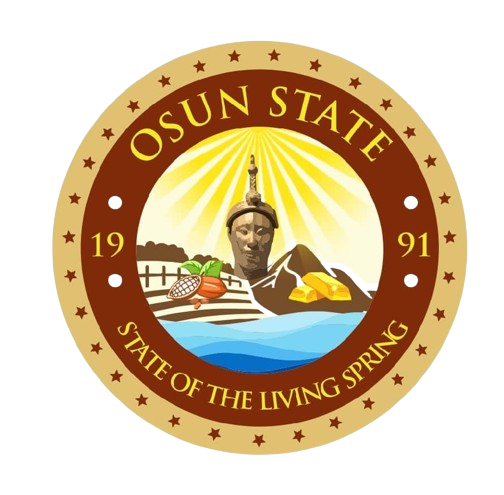
Osun: Template of Education Reform
When the governor of Osun state, Rauf Aregbesola started the education reform, many were of the opinion that it was a white elephant project billed to go the way of past unsuccessful gestures. But today, it is a success story. YEJIDE GBENGA-OGUNDARE reports that the education model and O-Schools in Osun are models to emulate.

Education in Nigeria is associated with a myriad of challenges which includes decline in standard, deterioration of facilities, examination malpractice, under funding and lackluster performance of students among many daunting issues. And in one way or the other, stakeholders in the educational system due to their actions or inactions have contributed to the decay of the education sector either individually or as a whole.
Deplorable state of facilities; dilapidated buildings, inadequate furniture, terrible learning environment, decline in standard of education which is continually bridging the gap between the educated and ignorant are common features of government owned educational institutions
The collapsing state of education in Nigeria is further occasioned by lack of creativity or ability to think constructively, lack of self confidence, laziness, terrible attitude of instructors to work, examination malpractice and over dependence on exam ‘chips’, deviance and lack of morals and respect.
It is therefore a normal occurrence to see students walking about during school hours across the states of the federation without fear of being apprehended or punished. But this is a thing of the past in Osun state today; no student irrespective of background or pedigree dares to walk around during school hours especially in school uniform. This is due to the efforts of the state governor, Ogbeni Rauf Aregbesola, in reforming the education sector in the state through an integrative approach which combines the education of children and youth.
To build a functional education system of his dreams, Ogbeni Aregbesola made a rule that makes it an offense for any pupil to be seen roaming around during school hours and he inaugurated the education marshals who are saddled with the sole responsibility of apprehending any child of school age found roaming the streets during the school hours. The marshals are to take any apprehended child to their parents and ensure both the parents and the child are taken to the nearby school for immediate enrolment.
This development, it was observed, has had an impact on the enrolment status of public schools, in addition to the fascinating structures and state of the art amenities put in place by the government; there is an increase in the population of students enrolled in schools on a regular basis. During Nigeria Tribune’s visit to Laro-Timehin Middle Schools 1 and 2, at Asubiaro in Osogbo, some children of school age roaming the community were apprehended by education marshals.
The apprehended children and their parents were brought before the principal of the school, who took time to educate the parents on the importance of education and what is required to get their wards enrolled as students in the school; N1500 for school levy, N3000 for infrastructure maintenance fee and N1200 for PTA levy, adding that education in Osun middle schools is almost free.
One of the education marshals that spoke with Nigerian Tribune stated that he is happy to be contributing his quota to the development of the state and upbringing of the children to ensure a bright future for future generations in the state, adding that since inauguration of the marshal scheme early in May, activities of the marshal has helped in improving the enrolment figure in schools within the state.
This is not the only attractive feature of the Osun educational reform; worried by the squalid situation that existed in the past; Aregbesola organized an educational summit that led to a policy of wholesale reform of education at the primary and secondary levels based on the belief that basic education is also of paramount importance.
He changed the normal classification format of primary, junior secondary, senior secondary to the elementary, middle school and high school format as a means of arriving at the most functional and cost-effective ways to deliver education to school children as well as designing effective monitoring and control of the process. The education reform started with the provision of exercise books textbooks and customised tablets (Opon Imo for public school pupils and payment of examination fees for the West African Examinations Council and a rule 90 per cent attendance to discourage truancy and make school attractive to vulnerable kids.
What stand the Osun schools out are the structure as well as infrastructures that are alien to public schools in Nigeria. Aregbesola under the education reform and in line with his belief that all children irrespective of status of parents deserve qualitative education embarked on massive remodeling of schools to meet with international standards. Elementary schools are refurbished to have modern classrooms, administrative blocks, library and computer facilities as well as adequate playgrounds while some structures were completely pulled down to give room to new, modern structures.
The infrastructural reform further includes the construction of 100 primary schools, 50 middle schools and 20 high schools around the state with each school complex designed for a population of 1000 thousand pupils of the same age group while other dilapidating structures were renovated to standard. The underlying factor in all school buildings constructed and those renovated is the focus on creating conducive physical atmosphere that aids learning.
Today, public schools in Osun state can compete favourably with the best private schools across the country in terms of infrastructure as many private schools do not have the amenities that characterize public schools today. The schools have been given the best in terms of infrastructural facilities under the radical Aregbesola education reform and the difference is obvious to everyone; state of the art schools equipped with dining halls, potable water supply system with standard toilets facilities, reception areas, well organized staff rooms, library, recreation centre, common room, beautiful lawns and computer laboratory.
The school structures in Osun are tailored to international standards and have become a model for other states, reiterating the commitment of the Ogbeni Aregesola’s administration to education revolution and resolve to build a new man in every child to sustain the future of the state.
The governor while commissioning one of the schools had stated that, “We have state-of-the-arts schools with quality finishing. Our schools are incomparable most especially the facilities therein. We have put in place schools with beautiful environment conducive for learning and teaching. And for any parent to complement this gesture, his or her child must appear very neat to school. It is in view of that we urge our people to support education. This does not lie on parents alone; our teachers too must do the needful and ensure that every child is encouraged on neatness.
The deputy governor who is also in charge of education, Mrs Titilayo Laoye Tomori, had stated that Osun state has succeeded in the implementation of all its policies and programmes as promised in the education sector as Governor Aregbesola’s passion for education has no limit. She attributed the feat to unwavering commitment attached to education by the Aregbesola led government in the state, adding that the state has successfully raised the bar of teaching and learning in the public education sector.
According to her, the state has designed a roadmap aimed at ensuring all round infrastructural and human development in the education sector without socio-economic or political backgrounds of the citizen by building a lifetime assets in the education sector as many of its achievements are designed not only to improve the standard of education but to as well guarantee brighter future for the present and incoming generations.
The Osun model schools have been said to be architectural masterpieces that can never be found in public schools elsewhere in Nigeria. This assertion was confirmed by President Muhammadu Buhari when he visited the state to commission the Osogbo Government High School; a three-in-one school designed to accommodate 3,000 students each school with its own principal and a facility manager for maintenance with Wifi facilities.
The school is made up 72 classrooms of 40 square meter each capable of sitting 49 students with individual seats and classroom lockers and has six offices for study groups; six laboratories; 18 toilets for girls and 18 for boys; a science library; an arts library; facility manager’s office; a bookshop, a sick bay, staff rooms and an executive principal’s office.
Other schools that have the same facilities with the Osogbo Government High School; Wole Soyinka Government School, Ejigbo; Ataoja School of Science, Osogbo; Unity/Fakunle Comprehensive Government High School, Osogbo; Seventh Day Adventists, Ede; Ilesa Grammar School and the Iwo High School among others.
At inception, there were criticisms from many quarters that the Osun State Education Policy was a haphazard policy that will fizzle out without any positive result but the situation of the education sector in the state at present has proved critics wrong and has attested to the fact that the policy is a comprehensive and holistic response to an obvious educational rot. A proof of this is the upward movement in academic performance nationally. Osun moved from 34th position in ranking among Nigeria’s 36 states in 2010 to 18th position in 2011 and eighth position in 2012, in performance rankings in the West African School Certificate Examinations (WASCE).
Indeed, any serious child that goes through the Osun public schools system is expected to be a complete child that grow up to become a complete citizen empowered in learning, character and equipped to face the world in addition to being patriotic to the state and country as a whole.



